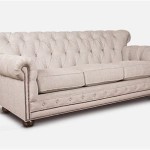Sofa Etymology: A Journey Through Time and Culture
The sofa, a ubiquitous piece of furniture in contemporary homes, boasts a rich history that spans centuries and continents. Its evolution from humble beginnings to a symbol of comfort and relaxation is a testament to human ingenuity and the changing nature of society. To fully grasp the sofa’s significance, it is essential to delve into its etymological roots, tracing the word’s journey through language and culture.
Arabic Origins and the Transition to Europe
The word “sofa” originates from the Arabic word “suffah,” meaning “bench” or “platform.” This term referred to a low, raised platform often found in traditional Arab homes, serving as a place for seating and relaxation. The “suffah” was typically covered with cushions and blankets for added comfort. During the Ottoman era, the “suffah” evolved into a more elaborate and padded piece of furniture, incorporating luxurious fabrics and intricate designs. This Ottoman-style “sofa” found its way into Europe through trade and conquest, becoming a popular piece of furniture among the elite.
The Sofa's Western Expansion and Evolution
The introduction of the “sofa” into Europe had a significant impact on furniture design. It inspired the creation of various styles, with notable examples including the French “canapé” and the English “chesterfield.” During the 18th and 19th centuries, the sofa gained immense popularity in Western society, becoming a symbol of status and refinement. Its function evolved from a purely decorative piece to a central element of domestic life. The advent of mass production in the 20th century made the sofa accessible to a broader population, transforming it from a luxury item to a staple of everyday life.
Cultural Variations and Modern Interpretations
The sofa’s journey through time and culture has resulted in a myriad of interpretations and styles. In China, the “kang,” a raised platform bed with heating elements, served as a forerunner to the modern sofa. In Japan, the “tatami,” a straw mat laid on a wooden frame, was used as a floor covering and a seating surface. These cultural variations illustrate the sofa’s adaptability and its ability to blend into diverse social contexts. Today, the modern sofa comes in an array of styles, materials, and designs, catering to various tastes and lifestyles. From minimalist and contemporary to traditional and eclectic, the sofa continues to evolve, reflecting the changing trends and preferences of society.
The sofa’s etymology offers a fascinating perspective on how this ubiquitous piece of furniture has shaped and been shaped by different cultures. Its journey from a simple bench in the Arab world to a cornerstone of modern living is a testament to the power of language, design, and cultural exchange. The sofa's enduring popularity underscores its ability to provide comfort, relaxation, and a sense of belonging in homes around the world.

Sofá Wiktionary The Free Dictionary

Couch Wikipedia

Sofa Couch Or Settee What S The Difference Darlings Of Chelsea

The Origin Of Sofa Hugues Chevalier

Chesterfield Sofa Origin Name British Sofas

The Origin Of Sofa Hugues Chevalier

Sofa Couch Or Settee What S The Difference Darlings Of Chelsea

Why Do We Call It A Sofa Or Couch Settee Inspiration Corner

What S The Difference Between Sofa Couch And Settee Swyft

The Origin Of Sofa Hugues Chevalier








